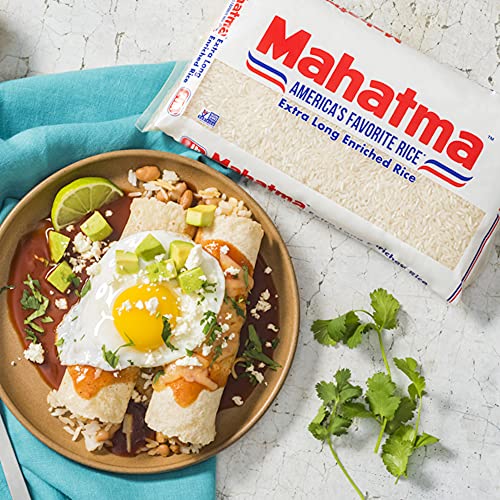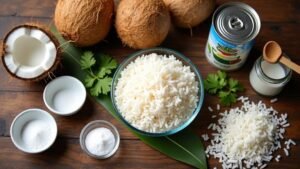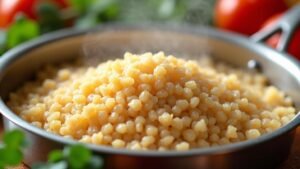Cooking rice in a bag is an easy and convenient way to prepare this staple food. Rice cooked in a bag is not only quick and easy but also results in perfectly fluffy grains without the need for constant attention.
So, today., I’m going to give you all of the knowledge you need to cook bag rice perfectly, every time!
To cook rice in a bag, you must first choose the right type of rice that suits your taste buds and dietary needs.
It is important to rinse and soak the rice before cooking it to remove excess starch and improve its texture. Measuring the water-to-rice ratio accurately will ensure that your rice is cooked perfectly every time. Adding flavors and seasonings like herbs, spices, or butter can enhance the taste of your rice dish while cooking it in a bag, eliminating the need to watch over it constantly.
Table of Contents
Choose the Right Type of Rice
The selection of the appropriate type of rice is a crucial first step in achieving optimal results when cooking bagged rice. There are several types of rice available on the market, each with its unique characteristics that affect the taste, texture, and overall quality of the cooked rice. The most common types of rice used for bagged rice include long-grain white rice, brown rice, jasmine rice, and basmati rice.
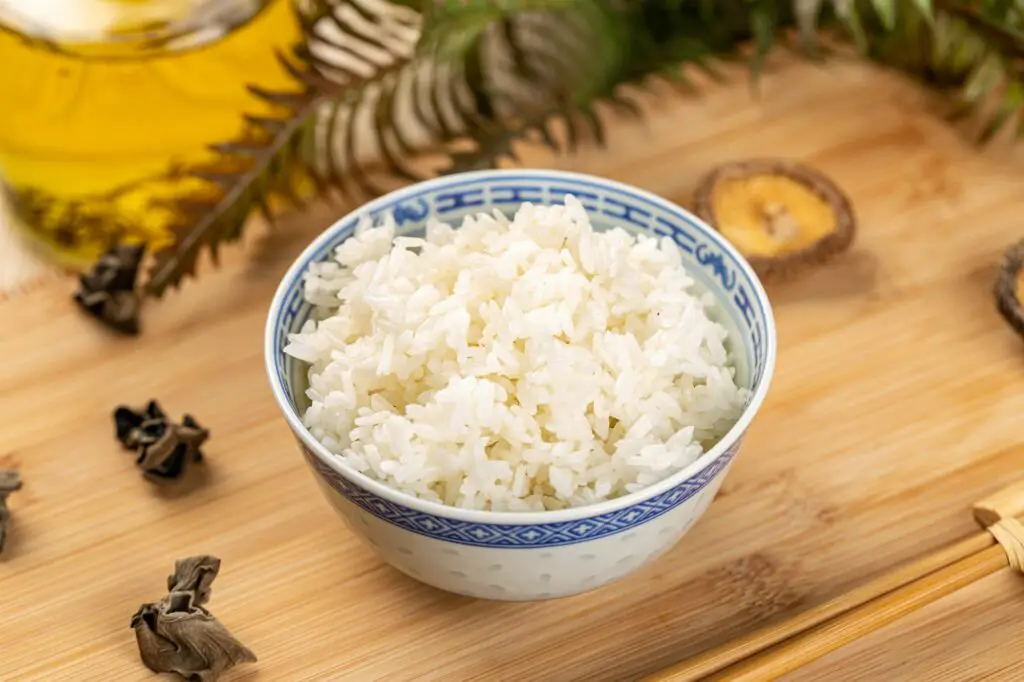
Long-grain white rice is the most widely used type of packaged rice due to its affordability and versatility. It has a fluffy texture and mild flavor that pairs well with many different dishes. Brown Rice, on the other hand, has a nutty flavor and chewy texture due to its high fiber content. Jasmine rice is aromatic and fragrant while Basmati Rice has a distinctive nutty aroma that makes it ideal for use in Indian cuisine.
When choosing between these varieties of packaged rice it’s important to consider their cooking techniques. Long-grain white requires more water than other types to achieve an optimal result, whereas brown may require longer cooking times or soaking before being prepared. Jasmine requires less water than other varieties but does need more attention during cooking due to its delicacy, while Basmati benefits from rinsing before being prepared.
Selecting the right type of packaged rice is essential in producing good-quality cooked results. By comparing different varieties’ characteristics (flavor profile & textural qualities) against your desired outcome preferences and considering each variety’s specific cooking requirements, one can make informed decisions about which option will work best for your recipe’s needs, ensuring optimal end product results every time!
Rinse and Soak the Rice
Before the cooking process, it is recommended to rinse and soak the grains in water for a certain amount of time. This seemingly simple step can make a big difference in the final product. Soaking rice has been practiced for centuries, particularly in Asian countries where rice is a staple food.
The benefits of soaking rice include improved texture, taste, and nutrition. Soaking helps remove excess starch from the grains, resulting in fluffier and less sticky cooked rice. It also reduces cooking time and enables the rice to cook more evenly. Additionally, soaking can improve digestion by breaking down phytic acid which can inhibit nutrient absorption.
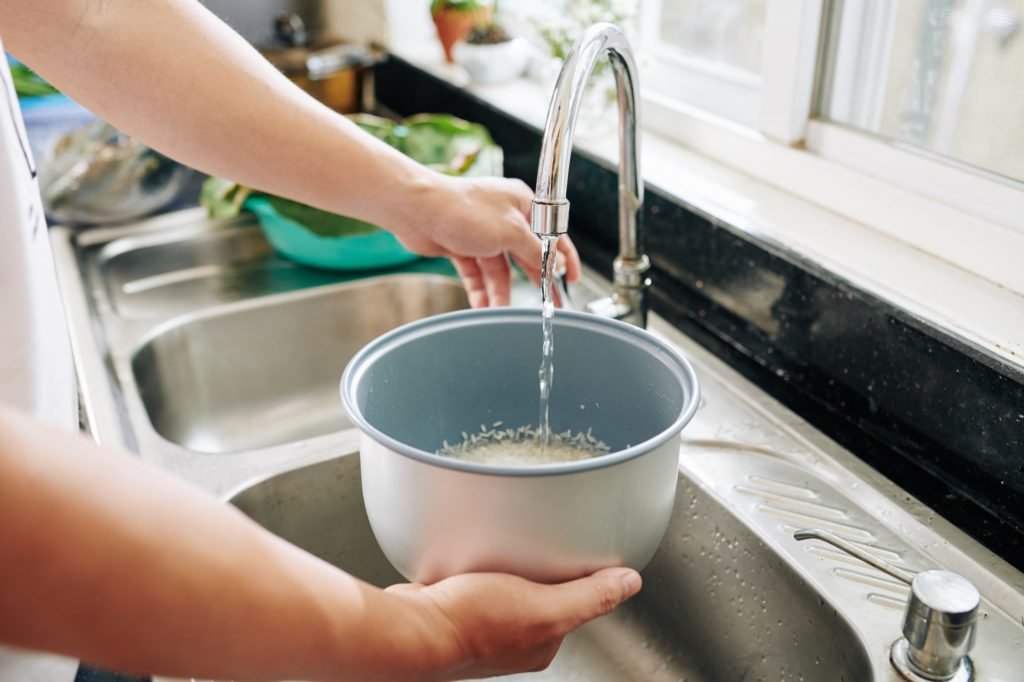
There are different methods for soaking rice depending on personal preference or tradition. Some people prefer cold water while others use warm water. Soaking times may vary from 30 minutes up to several hours depending on factors such as the type of rice being used and the desired final texture. Regardless of method or duration, rinsing and soaking are important steps that should not be overlooked when preparing bagged rice for optimal results.
Measure the Rice and Water
In order to achieve perfectly cooked rice, proper measurement of the rice and water is crucial. The recommended rice to water ratio may vary depending on the type of rice being used. It is also important to consider factors such as altitude and humidity which can affect how much water is needed for cooking.
The Proper Rice to Water Ratio
Achieving the perfect rice to water ratio is like finding a needle in a haystack when it comes to cooking bagged rice. The proper ratio is essential for getting fluffy, perfectly cooked rice every time. Boiling and steaming are two methods used to cook bagged rice, each requiring different amounts of water.
Different rice varieties also require different amounts of water. For example, long-grain white rice requires 1 3/4 cups of water per cup of rice, while short-grain brown rice requires 2 cups of water per cup of rice. To make things easier, below is a table outlining the recommended ratios for some common types of bagged rice:
| Rice Variety | Water (Cups) | Rice (Cups) |
|---|---|---|
| Basmati | 1¾ | 1 |
| Jasmine | 1¾ | 1 |
| Long Grain White | 1¾ | 1 |
| Short Grain Brown | 2 | 1 |
By following the recommended ratios and adjusting them based on your personal preference for texture and moisture level, you can achieve perfectly cooked bagged rice every time. Remember that practice makes perfect when it comes to cooking any type of food, including bagged rice.
Adjusting for Altitude and Humidity
One important consideration when preparing rice is adjusting for changes in altitude and humidity, which can affect the cooking time and water absorption. At high altitudes, where there is less atmospheric pressure, water boils at a lower temperature. This means that the rice will take longer to cook because it will be absorbing more water than it would at sea level. Additionally, in humid environments, moisture levels in the air can impact the amount of liquid needed for cooking rice.
To ensure your rice is cooked properly at high altitudes or in humid environments, follow these troubleshooting tips:
- Increase cooking time: If you notice that your rice is still hard after the recommended cook time has passed, add an additional 5-10 minutes to the cooking process.
- Add more water: If your rice seems dry or undercooked despite following the recommended ratio of water to rice, try adding an extra 1/4 cup of water per cup of rice.
- Use a lid: Keeping a tight-fitting lid on your pot while cooking allows steam to build up and helps prevent moisture from escaping.
- Experiment with different types of rice: Some types of rice are better suited for high-altitude or humid conditions than others. Consider trying out different varieties until you find one that works best for your environment.
By following these tips and adjusting your cooking method as necessary, you can ensure that your bagged rice comes out perfectly every time – no matter what environmental factors may be at play!
Add Flavors and Seasonings
To enhance the taste of bag rice, a dash of salt and a sprinkle of herbs can be added, much like how a painter adds colors to their canvas to create depth and dimension. The combination of flavors can vary depending on personal preferences and cultural influences. Some common flavor combinations include garlic and onion for a savory profile, or cinnamon and nutmeg for a sweet touch.
In addition to adding herbs and spices, cooking techniques can also affect the flavor profile of the bag rice. For example, sautéing the rice in oil before boiling it can add nutty undertones to the dish. Similarly, substituting water with chicken or vegetable broth can give the rice an extra burst of flavor.
It is important to note that when adding flavors and seasonings to bag rice, moderation is key. Over-seasoning may overpower the natural taste of the rice itself. By experimenting with different combinations of flavors and techniques, one can create an array of delicious dishes using simple bagged rice as a base ingredient.
Cook the Rice in the Bag
When it comes to cooking rice in a bag, two popular methods are using a rice cooker or stovetop. The key to perfectly cooked bag rice lies in knowing how long to cook it for and choosing the right method based on your preference. To ensure precision and accuracy, following the instructions on the package is crucial, and making adjustments based on altitude or personal preferences may also be necessary.
How Long to Cook the Rice
The optimal cooking time for bag rice is determined by the type of rice used and the desired texture. When cooking bag rice, it is important to follow instructions carefully in order to achieve the best results. Here are some factors that can affect the cooking time and texture of bag rice:
- Type of Rice: Different types of rice require different amounts of water and cooking times. For example, brown rice takes longer to cook than white rice.
- Altitude: Cooking times may differ depending on your altitude. At higher altitudes, water boils at a lower temperature which means that you may need to cook your rice for a longer period of time.
- Desired Texture: The amount of water used during cooking will determine the texture of your cooked rice. If you prefer softer, stickier rice, use more water than recommended. If you prefer firmer grainy texture, use less water.
It is important to note that overcooking your bagged rice can result in a mushy consistency while undercooking can leave it crunchy. It is thus essential to keep an eye on the cooking process and check regularly with a fork or spoon until you reach the desired consistency. By following these tips and tricks for determining optimal cooking time and achieving desired texture, anyone can easily cook perfect bagged rice every time without any fuss or hassle!
Using a Rice Cooker or Stovetop Method
Utilizing either a rice cooker or stovetop method can offer efficient and consistent techniques to prepare rice dishes. Both methods have their advantages and disadvantages, so it is important to choose the method that suits your needs best. The rice cooker is an electric appliance that automatically cooks rice to perfection. It requires minimal attention, freeing up time for other tasks in the kitchen. On the other hand, the stovetop method offers more control over the cooking process and allows for customization of flavors by adding ingredients such as broth or spices.
When comparing cooking times between a rice cooker and stovetop method, it is important to note that both methods require different amounts of water and produce different textures of rice. Generally speaking, a rice cooker takes longer to cook than using the stovetop method due to its automatic settings. However, with careful monitoring and precise measurements on the stovetop, you can achieve perfectly cooked rice in less time than using a rice cooker. A helpful tip for preventing sticking is to rinse the grains thoroughly before cooking them and add oil or butter when using the stovetop method.
Fluff and Serve
Fluffing the cooked rice with a fork creates an airy texture and makes it easier to serve. After the rice has finished cooking, allow it to sit for a few minutes before fluffing it. This will help prevent any excess moisture from making the rice soggy. The fluffing technique involves using a fork to gently pull apart the grains of rice, creating space between them. This allows for better absorption of any sauces or seasonings that are added.
When serving bagged rice, there are several suggestions to keep in mind. Firstly, use a large spoon or spatula to transfer the fluffy rice onto plates or bowls. Avoid pressing down on the rice as this can cause it to become compacted and lose its light texture. Secondly, consider adding some fresh herbs or chopped vegetables on top of the rice as garnish – not only does this add flavor and color but also gives your dish an extra layer of nutrition.
Fluffing cooked bagged rice is a simple yet essential step in achieving perfectly cooked grains that are light and fluffy in texture while being easy to serve and absorb flavors well. Incorporating additional ingredients like herbs or vegetables when serving can enhance both flavor and presentation. By following these techniques and suggestions, you can take your bagged rice dishes from mediocre to outstanding!
Conclusion
Selecting the proper type of rice, rinsing and soaking it before cooking, and accurately measuring the amount of water required are all crucial steps in preparing bag rice. Adding flavorings and seasonings to enhance the dish’s taste is another key component. Finally, cooking the bag rice as directed on the packaging is essential for achieving the best results.
Fluffing and serving the cooked bag rice completes the process of making a delicious meal. In summary, following these simple steps can ensure that your bag rice turns out scrumptious every time you make it. Remember to always read the instructions on the package carefully, measure ingredients accurately, and add flavorful ingredients to enhance your dish’s taste. By doing so, you will have a delectable dish that everyone at your table will love!


